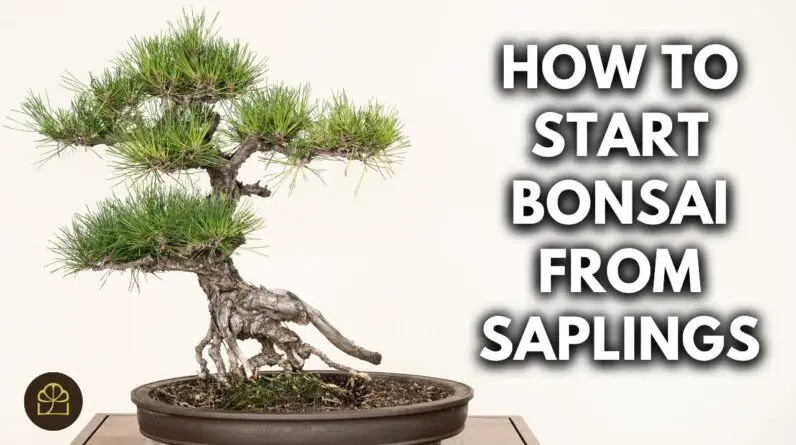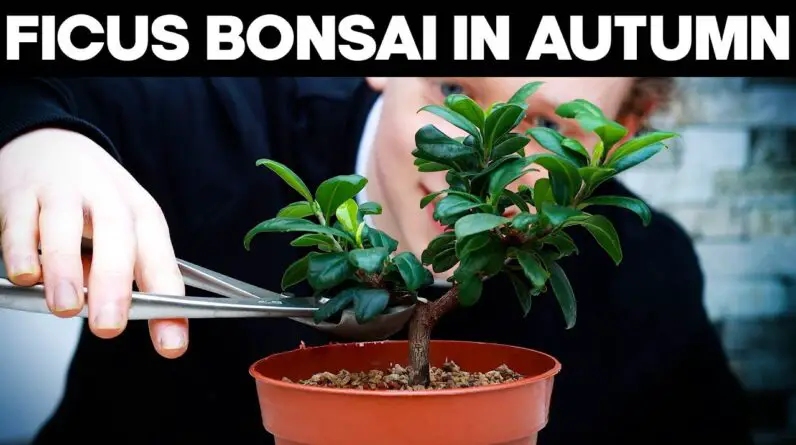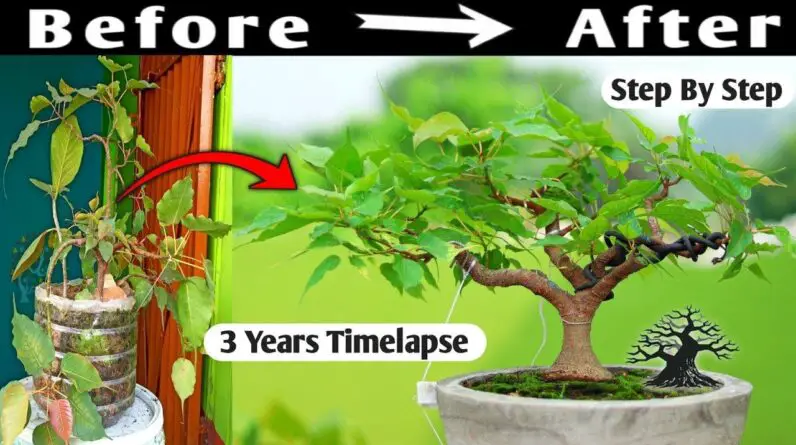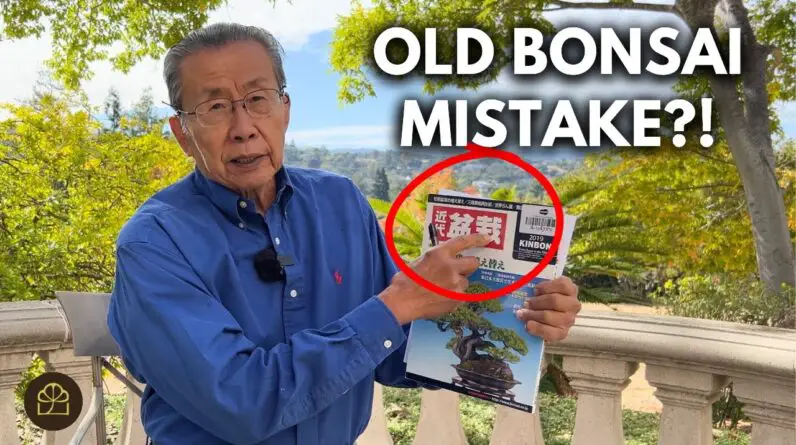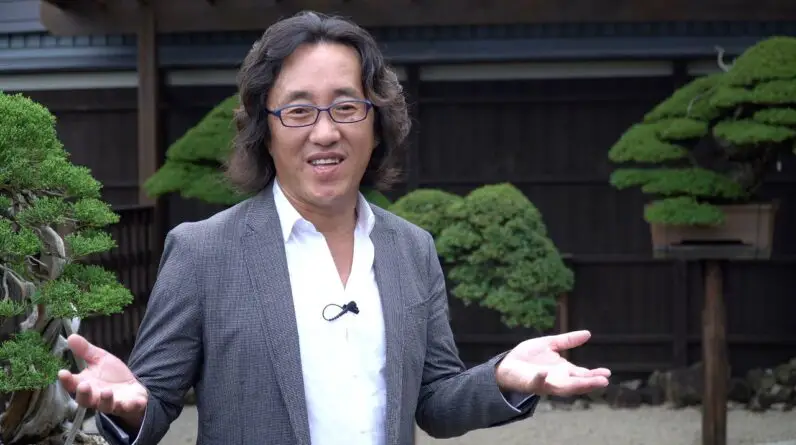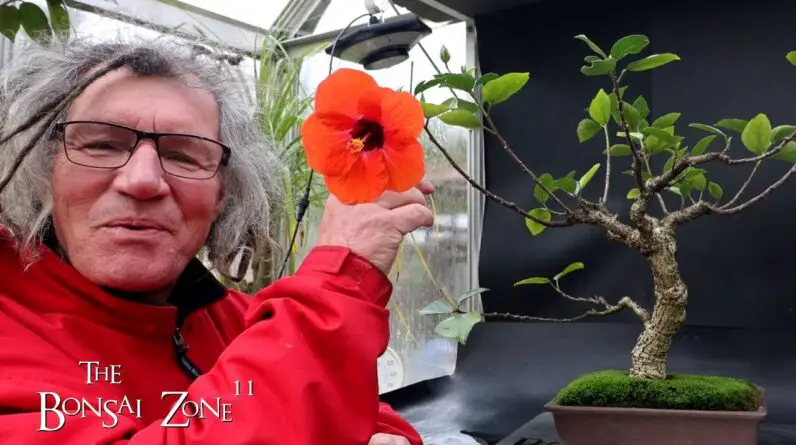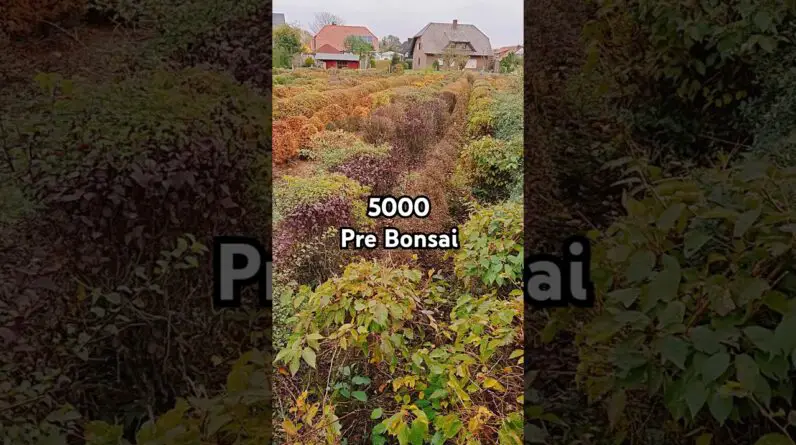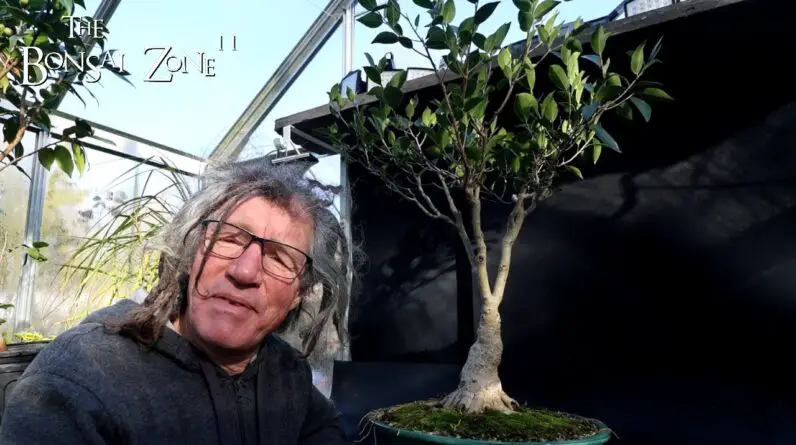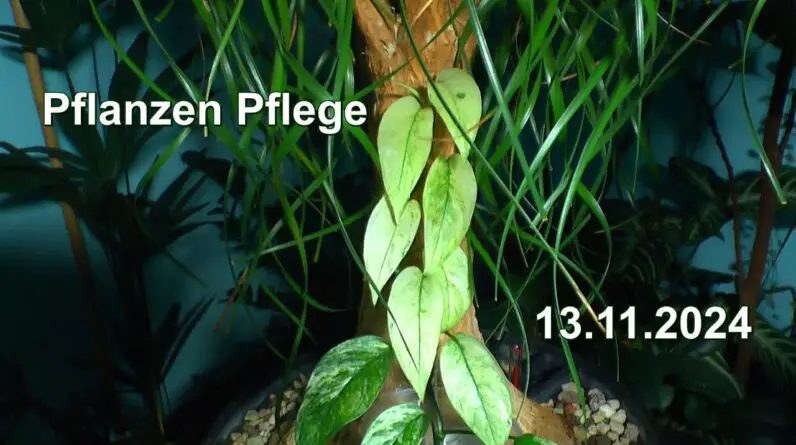Intend to learn just how to make an Apple bonsai tree? In this video clip by Bonsai Realm, they reveal you just how to trim and wire an Apple tree that is around 15 years old. The video clip was recorded throughout autumn, when the tree was loaded with little apple trees.
Bonsai Realm is passionate about sharing the living art of Bonsai and produced this DIY tutorial to assist and motivate newbies. This video becomes part of their online courses, however they provide lots of other totally free video clips as well.
So if you have an interest in finding out more concerning Bonsai strategies, head over to Bonsai Empire’s web site!
In the video clip, they discuss the process of pruning and electrical wiring this Apple bonsai tree. They utilize little trimming shears, pliers, and cord cutters. The top branch is the initial to be cut, and after that they concentrate on two thicker branches to achieve the desired shape.
They demonstrate the importance of a 360-degree technique when cutting and circuitry to avoid any kind of dead angles. After the pruning and electrical wiring, the tree looks much more polished and well balanced. With normal upkeep, this tree will continue to thrive and grow brand-new branches in the upcoming springtime. If you want to learn more about trimming, wiring, and repotting techniques, consider joining Bonsai Realm’s online training courses and get to expert advice and the possibility to ask the teachers concerns straight.
Apple Bonsai Tree: An Intro
Invite to the globe of apple bonsai trees! Producing and growing a small apple tree can be a gratifying and satisfying pastime. Not only do these bonsai trees provide an attractive aesthetic, yet they also offer the opportunity to expand your own fruits in a little and workable area.
In this comprehensive write-up, we will certainly guide you through the procedure of selecting the best apple tree selection, collecting the required materials, growing the tree from seeds, pruning and electrical wiring strategies, proper maintenance, potting considerations, and the differences between outside and indoor apple bonsai trees.
Think about the Size of the Bonsai
When selecting an apple tree selection for bonsai cultivation, it is necessary to think about the ultimate size of the tree. Since bonsai trees are suggested to be miniature variations of their bigger counterparts, selecting a range that normally stays little is important. Seek apple tree ranges that are known for their portable growth and smaller stature, such as columnar apple trees or naturally dwarf varieties. This will certainly make certain that your bonsai continues to be symmetrical and is easier to handle.
Pick a Crab Apple Tree Range
Crab apple trees, with their little and vibrant fruits, are frequently the recommended selection for apple bonsai cultivation. These trees naturally have more fragile and proportional attributes, making them well-suited for bonsai aesthetic appeal. Additionally, crab apple trees are hardy and versatile, making them less complicated to care for and preserve as bonsai specimens. Consider varieties such as Malus sylvestris or Malus floribunda, which are typically utilized in bonsai growing.
Consider the Environment and Area
Before deciding on the apple tree range for your bonsai, it is essential to think about the environment and place where you intend to expand it. Different apple tree ranges prosper in different climates, so pick a range that is appropriate to your particular area. In addition, remember the quantity of sunshine and temperature demands of the selected range. The majority of apple trees need full sunlight to thrive, so guarantee that your selected location provides ample sunshine throughout the day.
Select an Ideal Bonsai Pot
Choosing the right bonsai pot is essential for the wellness and visual appeals of your apple bonsai tree. Look for a pot that is proportional to the size of your tree and enhances its total style. Bonsai pots can be found in numerous products such as ceramic, plastic, or clay. Each product has its own advantages and factors to consider, so pick one that fits your personal choices and the certain demands of your apple bonsai tree.
Get High Quality Bonsai Dirt
Top notch bonsai dirt is vital for the healthy and balanced growth of your apple bonsai tree. The dirt ought to give appropriate drainage while preserving enough wetness for the tree’s roots. You can purchase pre-made bonsai soil mixes that are especially designed for bonsai cultivation, or you can develop your very own mix by integrating elements such as Akadama, pumice, and lava rock. Testing with different soil mixtures might be needed to discover the ideal balance for your apple bonsai tree.
Get Pruning and Circuitry Devices
Pruning and electrical wiring are necessary strategies for forming and maintaining the kind of your apple bonsai tree. To successfully prune and wire your bonsai, you will certainly need a collection of proper tools. Some crucial devices consist of a concave branch cutter for accurate trimming, bonsai cord cutters for managing the cord, and pliers or tweezers for complex job. Purchase high-grade devices to make certain precision and decrease damages to your apple bonsai tree.
Collecting Apple Seeds
Among the most fulfilling means to start an apple bonsai tree is by growing it from seeds. You can accumulate apple seeds from ripe fruits or acquire them from trustworthy vendors. Make certain that the seeds are fresh and practical for the best opportunities of germination.
Preparation of Seeds for Planting
Prior to planting the apple seeds, it is essential to prepare them for optimum germination. Begin by soaking the seeds in water for 24-hour to soften the external seed coat. After soaking, get rid of the seeds from the water and allow them to completely dry for a couple of days. This process aids damage the seed’s dormancy and enhances the possibilities of successful germination.
Planting and Germination Refine
Once the seeds are prepared, plant them in small pots filled with well-draining bonsai dirt. Place the pots in a cozy and bright area, and maintain the dirt constantly wet. Germination typically takes around two to 4 weeks, depending on the variety and environmental problems. When the seedlings have sprouted, select the healthiest ones to continue expanding as your future apple bonsai trees.
Understanding Pruning Methods
Pruning is an essential element of bonsai cultivation that assists maintain the tree’s dimension, form, and overall aesthetics. By selectively getting rid of branches and foliage, you can attain the wanted type and balance. Find out about various pruning techniques such as upkeep trimming, branch pruning, and squeezing to preserve the health and wellness and shape of your apple bonsai tree.
Recognizing the Right Branches to Trim
When trimming your apple bonsai tree, it is necessary to recognize the branches that need to be trimmed. Look for branches that interfere with the wanted type or impede the tree’s total balance. Eliminate any type of dead, harmed, or undesirable branches to advertise healthy and balanced development and protect against illness. Seek advice from bonsai resources or seek assistance from seasoned bonsai fanatics if you’re unclear which branches to trim.
Trimming to Achieve Desired Shape
Pruning is not just regarding maintenance yet additionally concerning forming your apple bonsai tree. Use trimming strategies to direct the tree’s development and accomplish the preferred form and design. Take into consideration standard bonsai forms such as formal upright, inclining, or waterfall, and adjust them to match the attributes of your apple bonsai tree.
Preparing the Tree for Circuitry
Circuitry is an additional vital strategy in bonsai farming that assists produce and maintain the preferred form and structure of your apple bonsai tree. Before using wires, make certain that the branches and trunk are versatile adequate to be controlled without triggering damage. Younger branches are more versatile and easier to wire, while older branches might need progressive bending gradually.
Choosing the Right Wire Dimension
Selecting the ideal wire size is essential to stay clear of harming the branches of your apple bonsai tree. The cord should be strong enough to hold the preferred shape without cutting into the bark. Select a wire size that is around one-third of the density of the branch being wired. Copper or light weight aluminum cable is frequently utilized, yet make certain it is soft enough to be easily formed.
Applying Wiring Strategies
To wire your apple bonsai tree, start by wrapping the cable at the base of the branch or trunk and after that delicately spiral it upwards, seeing to it to preserve a 45-degree angle in between the wire and the branch. Beware not to cover the cord also securely, as it can limit the tree’s blood circulation and cause damage. When the wanted form is accomplished, protect the cord by twisting the ends with each other or making use of cable clips. Get rid of the wire after a couple of months to avoid it from cutting into the bark.
Watering and Dampness Control
Appropriate watering is essential for the wellness and vitality of your apple bonsai tree. The regularity and amount of water needed depend upon various variables such as the climate, pot dimension, and tree’s growth stage. Water your apple bonsai tree when the top inch of soil feels completely dry, ensuring that the water reaches the whole origin system. Stay clear of overwatering, as it can lead to root rot and various other fungal illness.
Feeding and Nutrient Requirements
Maintaining dirt fertility is necessary for the healthy development of your apple bonsai tree. Apply a balanced fertilizer throughout the growing season to provide the required nutrients for ideal development. Usage organic or slow-release fertilizers particularly created for bonsai trees, complying with the recommended dosage directions. Consistently keep an eye on the tree’s action to fertilizing and change the feeding program appropriately.
Pest and Disease Monitoring
Like any other plant, apple bonsai trees can be prone to various insects and illness. Regularly inspect your tree for indications of invasion, such as stained fallen leaves, pests, or abnormal growth. If any problems are found, without delay take ideal steps to regulate and eliminate the issue. Take into consideration using natural parasite control approaches or seek advice from experts if essential.
Repotting Frequency and Timing
Repotting is a necessary job in bonsai growing that enables root system health and general development control. The frequency and timing of repotting depend upon various variables such as the age and development price of the apple bonsai tree. As a general standard, repotting is normally done every 2 to 3 years, preferably throughout the early springtime before the tree starts actively expanding.
Selecting an Appropriate Bonsai Pot
When repotting your apple bonsai tree, select a brand-new pot that is slightly larger than the existing one. Consider the appearances and general equilibrium of the tree when selecting the pot’s form and style. Ensure that the pot supplies adequate drainage openings and is made from a material that appropriates for bonsai growing.
Hair Transplanting and Origin Pruning
Throughout repotting, very carefully remove the tree from its existing pot and gently loosen up the root sphere. Check the origins and cut any type of damaged or excessively long origins. This procedure, referred to as root pruning, assists stimulate brand-new origin development and maintains the tree’s origin system compact. After origin pruning, put the tree in the new pot, ensuring that the roots are uniformly dispersed and covered with fresh bonsai dirt.
Appropriate Potting Techniques
When potting your apple bonsai tree, usage appropriate strategies to ensure its stability and healthy and balanced development. Placement the tree somewhat off-center in the pot to develop a feeling of motion and equilibrium. Safeguard the tree in position making use of bonsai cords or rocks, and fill up the continuing to be area in the pot with bonsai dirt, making certain that no air pockets are left. Water the freshly potted tree extensively and monitor its healing throughout the complying with weeks.
Advantages and Factors To Consider for Outdoor Bonsai
Expanding an exterior apple bonsai tree enables it to experience the natural changing seasons, which can enhance its overall beauty. Outdoor bonsai trees generally have more space to grow and develop a stronger root system. However, outdoor bonsai trees require careful consideration of climate and weather conditions, protection from extreme temperature fluctuations, and regular exposure to sunlight.
Benefits and Challenges of Indoor Bonsai
Growing an apple bonsai tree indoors provides more controlled conditions and allows enthusiasts in colder climates to enjoy bonsai cultivation year-round. Indoor bonsai trees require careful attention to temperature, humidity, and lighting conditions. Supplemental lighting may be necessary, especially during the winter months when sunlight exposure is limited. Additionally, indoor bonsai trees may require more vigilant pest and disease management due to the controlled environment.
Creating and caring for an apple bonsai tree is a rewarding and fulfilling endeavor. With proper knowledge and techniques, you can enjoy the beauty of nature in a miniature form and even grow your own miniature apples.
By choosing the right variety, gathering the necessary materials, mastering pruning and wiring techniques, maintaining proper care, and selecting the right pot and location, you can cultivate a stunning apple bonsai tree that brings joy and tranquility to your surroundings.
Happy bonsai cultivation!
[sspostsincat category=”Bonsai Apple Plant”]


